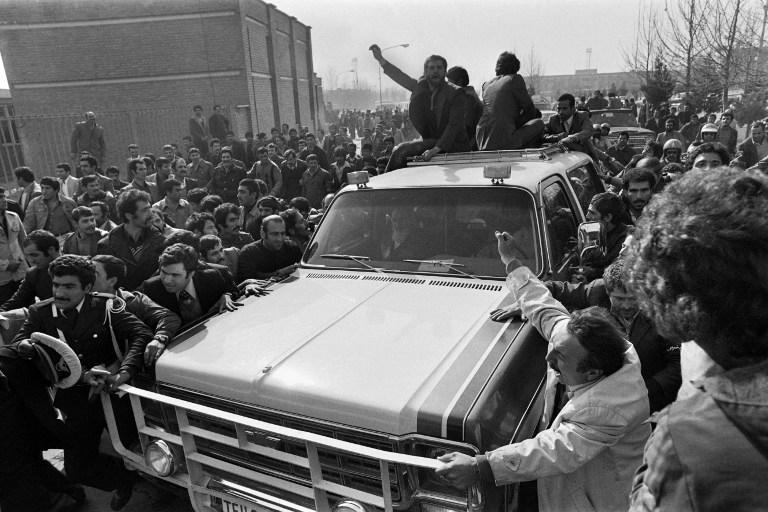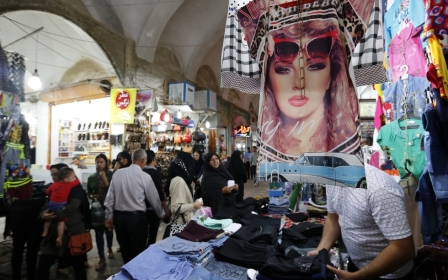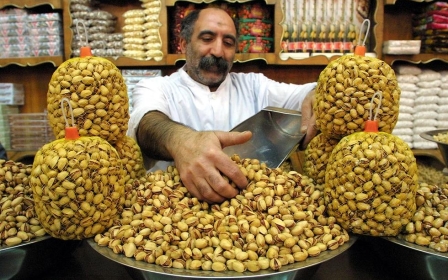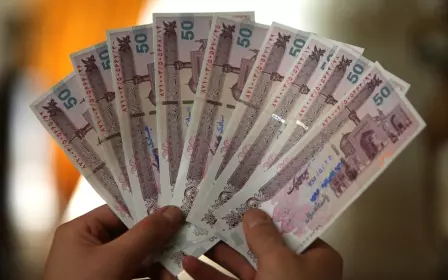The curious death of Iran's left

There is a consensus among the scholars who have studied and written about the 1979 Iranian Revolution that social and economic inequalities were central to the collapse of the Iranian Monarchy.
Ayatollah Ruhollah Khomeini, the leader of the Iranian revolution, mobilised the masses by defending the barefooted, the mostazafin. He presented the Islamic system as a system that would fulfill every aspect of social justice in its broad meaning, including the economic. Central to his discourse was defending kookh’neshinan (those who live in very poor accommodations) against kakh’neshinan (those who live in palaces).
Despite violent repression during the reigns of the two kings of Iran, Reza Shah Pahlavi (1925-1941) and his son, Mohammad Reza (the Shah, 1941-1979), Marxist groups - both those who had chosen non-armed struggle to overthrow the Shah regime and those who waged armed struggle - survived and were active during the Iranian Revolution.
Parallel to the leftist Marxist movement, Iran’s Islamic left emerged in 1943. According to Iranian scholar and historian, Ervand Abrahamian, Mohammad Nakh’shab (1923-1976), the leading ideologue of the God-Worshipping Socialists political party, is credited with the first synthesis between Shi’ism and European socialism.
Ali Shariati (1933-1977), identified by Abrahamian as the “ideologue of the Iranian Revolution,” wrote in 1955, “The social and economic Islamic system is [nothing but] practical socialism which is based on theism. [This system] is not similar to any of the two corrupt systems, i.e. capitalism or communism.”
Rise and fall - and rise again
In the first two years after the victory of the revolution, as a result an explosion of freedom of speech and a revolutionary climate, the leftist groups, both Islamic and Marxist, experienced significant growth in terms of the number of members and followers.
Gradually, however, antagonism between them and the Islamic system, then led by Ayatollah Khomeini, began to emerge. The leftist Islamic group, Mojahedin-e-Khalq (MKO), declared an armed struggle in 1981, and some of the Marxist groups took the same route.
The government, which was also involved in an existential war with Iraq, led by Saddam Hussein, began to consolidate its power. Every political party was banned, and violent crackdowns would follow. By 1984, the left outside of the government ceased to live in the country.
However, during the war (1980-1988), the Islamic left had the upper hand within the government. They had both the administration and the parliament under their control. The left current within the establishment consisted of different groups and organisations, but each believed in the government’s control over the economy and state ownership of strategic industries, objected to vast privatisation, prioritised social and economic justice over economic growth, and favoured a strong role for co-operative enterprises in the economy.
Power and wealth
As the war ended, Akbar Hashemi Rafsanjani, a staunch free-market advocate, took office in 1989 and leftists lost the majority in the parliament. Rafsanjani and his team would concentrate on liberalisation of the economy and economic growth. Social and economic justice discourse seldom surfaced, and no plan to reduce inequalities was ever thought of or discussed.
Rafsanjani’s Economic Adjustment Programme ended in hyper-inflation, which evoked some unrest in both large and small cities. While the poor struggled, oil money (oil rent) resulted in enormous wealth for a newly born class who, immediately after the war ended, connected themselves to the centres of power. This rent-seeking behaviour became a norm for success and acquiring wealth.
With the victory of Mohammad Khatami in the 1997 presidential election, the left came back to the political stage, this time under the banner of the “reform movement”.
However, in the eight years that they were away from politics, they had evolved into new creatures. Their concern was to establish a perfect civil society, which would include freedom and democracy. Khatami’s administration pursued the same economic policies of Rafsanjani, and dealing with inequalities was not visible even at the margins of the reform movement agenda.
Their opponents, traditional conservatives, feared that expansion of relations with the West, which was at the core of Khatami’s agenda, could result in the rise of technocrats and the shift of wealth and power from their camp to the newly-emerged camp.
As such, they began adopting justice-seeking positions and criticised Khatami’s economic policies. It was clear that those tactics were empty slogans because, despite having control over the parliament for the majority of the time, they did not take any sensible steps by introducing and passing laws to combat inequalities.
Widening inequality
Mahmoud Ahmadinejad won the 2005 presidential elections following a relentless fake campaign in defence of the low-income class.
Because the wealthy would not declare their real income and there was, and still is, no verification system, measuring inequality was not, and still is not, possible
His presidency (2005-2013) coincided with another global oil boom. In the absence of the will to fight corruption, the sudden increase of oil revenue occurring in a rentier economy was a recipe for taking corruption to staggering new heights. Luxury mansions, condominiums, and cars popped up like mushrooms, while the majority of the country was struggling to survive against rampant inflation and unemployment.
The government manipulated data to avoid revealing the weaknesses of the administration. The economic macro indexes did not reflect reality, including widening income inequality. Meanwhile, because the wealthy would not declare their real income and there was, and still is, no verification system, measuring inequality (for example, calculating the real Gini index) was not, and still is not, possible.
The opposition Green Movement, the largest protest wave in Iran since the 1979 revolution, appeared during the disputed 2009 presidential elections that ended in Ahmadinejad’s re-election. The movement sought freedom, but never raised a single objection to the ever-increasing widening gap in wealth and income.
Hassan Rouhani, the current moderate president, has pursued similar policies as Rafsanjani, and fighting inequality occupies no place in his agenda.
In a meaningful move, immediately after taking office in 2013, he appointed Mohammad Nahavandian, an economist and a steadfast free-market icon, as his chief of staff. Nahavandian was then the head of Iran’s Chamber of Commerce, the largest organisation advocating for a free market in Iran. Rouhani and his team seek economic growth, but distributing the wealth resulting from such growth is not their concern.
Parliament, in the meantime, is just a spectator of this current trend. Except for some sporadic comments made by a few members, there is no visible move to establish social justice.
Whodunnit
Some may argue that the left’s presence in the first decade of the revolution within the establishment was a natural reflection of a global climate where leftist tendencies were a trend. But, for precisely the same reason, the left must have at least some sort of presence in the Iranian system today.
In the last few years, leftist movements have emerged around the world, including those in quintessential capitalist systems, the UK and the US. The socialist Jeremy Corbyn won the leadership of the British Labour Party, and millions in the US voted for Bernie Sanders.
It could be argued that a securitised environment and dangerous consequences of opposing the government’s policies are the factors that have hindered the formation of a leftist movement outside of the system in Iran. But this argument is flawed. Leftist movements in many countries, specifically in Iran during the reign of Reza Shah and the Shah, began under repressive dictatorships.
So, the puzzling question becomes, “How can the absence of the left in revolutionary Iran be explained?”
- Shahir Shahidsaless is an Iranian-Canadian political analyst and freelance journalist writing about Iranian domestic and foreign affairs, the Middle East, and the US foreign policy in the region. He is the co-author of Iran and the United States: An Insider’s View on the Failed Past and the Road to Peace. He is a contributor to several websites with focus on the Middle East as well as the Huffington Post. He also regularly writes for BBC Persian. He tweets @SShahisaless.
The views expressed in this article belong to the author and do not necessarily reflect the editorial policy of Middle East Eye.
Photo: Hundreds of thousands of people gather in Tehran to cheer the motorcade carrying Iranian opposition leader and founder of Iran's Islamic republic Ayatollah Ruhollah Khomeini upon his return from exile on 1 February 1979 while the insurrection against the Shah's regime spreads all over the country (AFP)
This article is available in French on Middle East Eye French edition.
New MEE newsletter: Jerusalem Dispatch
Sign up to get the latest insights and analysis on Israel-Palestine, alongside Turkey Unpacked and other MEE newsletters
Middle East Eye delivers independent and unrivalled coverage and analysis of the Middle East, North Africa and beyond. To learn more about republishing this content and the associated fees, please fill out this form. More about MEE can be found here.





